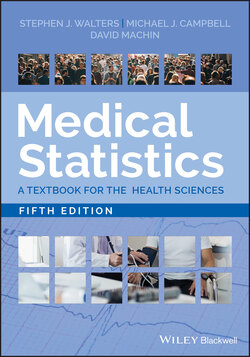Читать книгу Medical Statistics - David Machin - Страница 9
Preface
ОглавлениеIt is more than 13 years since the last edition of Medical Statistics: A Textbook for the Health Sciences was published and it has proven to be popular. This preface outlines the major changes and updates made since that edition was published.
All the chapters have been revised and updated. With simpler statistical methods it is useful to be able to carry out an analysis for oneself, to help fully understand its usefulness and its limitations. However, with the advent of public domain software for the analysis of data, ever more complex statistical methods are available to the researcher. These advanced methods have been incorporated in many elementary medical statistics syllabuses. A student today needs to understand the application and limitations of these methods to be able to fully evaluate articles in many main stream medical journals. To this end we have introduced new chapters on diagnostic tests, linear modelling, logistic modelling and a further one covering briefly more advanced topics such as random effects modelling and Poisson regression. At all times the emphasis is on understanding why such techniques should be used, their limitations, and how the results of such analyses are to be displayed.
Since the last edition, medical statistics has faced a number of challenges. One of the main ones is the problem of replication. A study is published, with a significant P‐value, but another study addressing the same research question fails to replicate this result. This can often cause consternation amongst among readers of research. We discuss this issue in Chapter 18 on Meta‐analysis. A related issue is the mis‐use of P‐values. This has been a major discussion point in the research community and we include this in our coverage of P‐values in Chapter 6.
We have found that quizzes within lectures are a useful method of consolidating a student's understanding of a topic. Each chapter contains a new set of multiple‐choice questions that can be used to test knowledge for the individual reader, or can be used by a lecturer, perhaps with a polling device to see how many students have understood a particular point.
Stephen J. WaltersMichael J. CampbellDavid MachinJuly 2020
